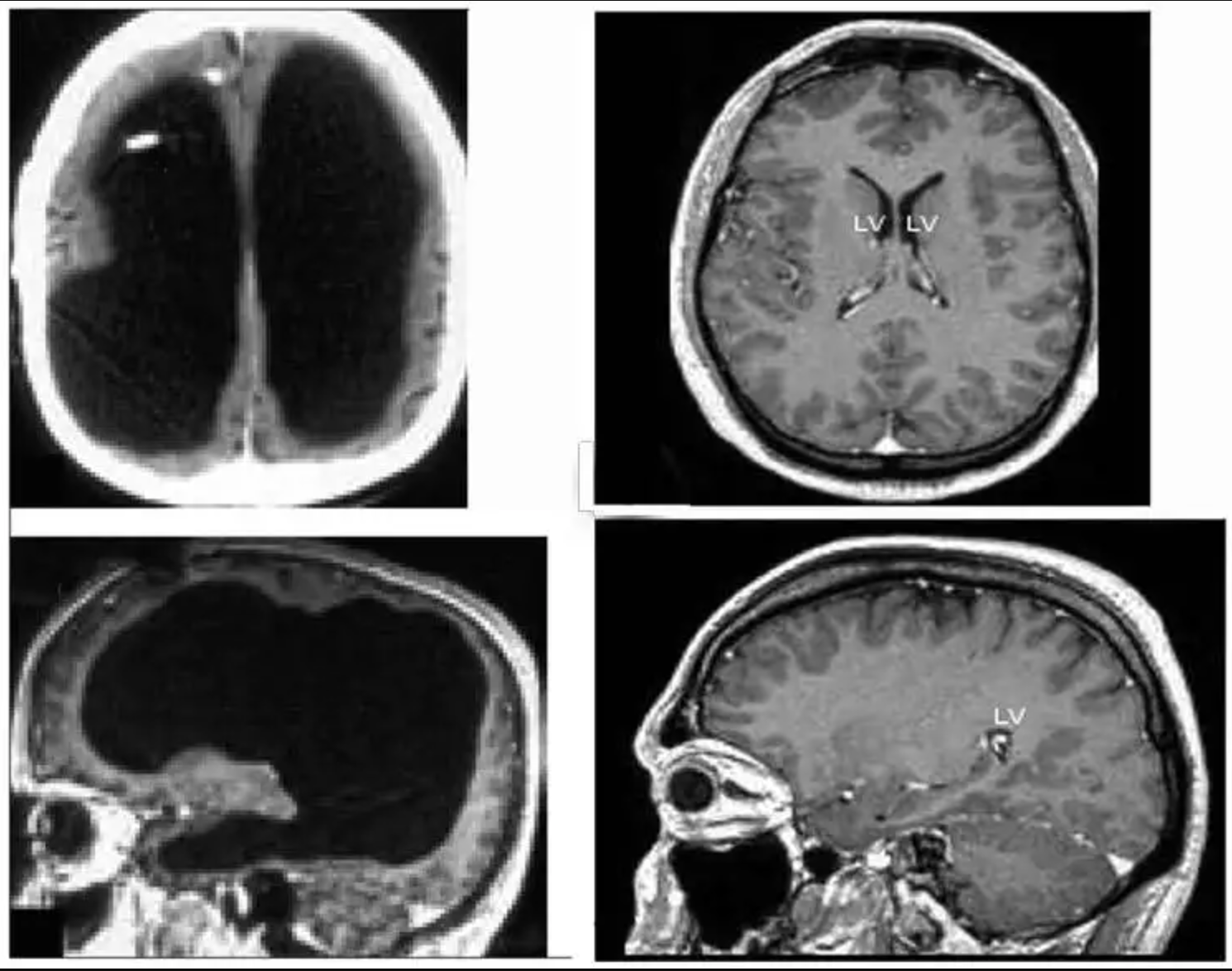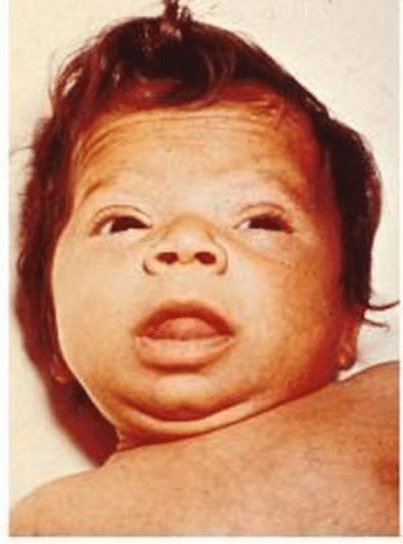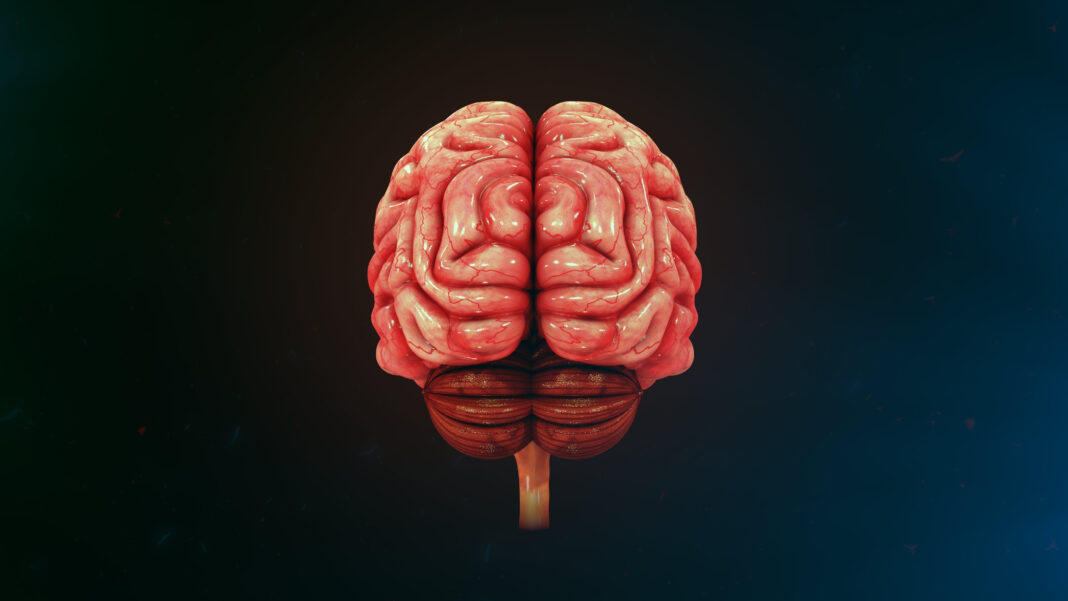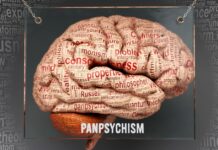A little-known but celebrated scientific paper in SCIENCE was written 30 years ago by Roger Lewin, with the startling title: Is Your Brain Really Necessary?1
Lewin was writing about the work of British pediatrician, John Lorber (1915-1996). Lorber collected research data concerning several hundred people who functioned quite well with practically no brains at all. Upon careful examination, he described some of the subjects as having “no detectable brains,” due to a condition called hydrocephalus. Water on the brain, as the layman knows it, can exert sufficient pressure inside the skull to crush and finally annihilate brain tissue. Some patients had as little as 1% of their brain remaining but nobody could tell from their thoughts or behavior.
One of Lorber’s most celebrated cases was a math major from the University of Sheffield. Instead of the normal 4.5-centimeter thickness of brain tissue between the ventricles and the cortical surface, Lorber discovered that the student had only a thin layer of mantle measuring about a millimeter and his cranium was filled mainly with cerebrospinal fluid. Yet the man in question had an IQ of 126 and graduated with honors.
This really does make it plain that the brain is not the be-all-and-end-all of human thought, as lazy scientists assume.
Unfortunately (for us), Lorber never published his observations in a scientific journal, although a documentary was made about them by Yorkshire TV. This makes it easy to claim the evidence is just anecdotal. However, the importance of Lorber’s work was that he had conducted a long series of systematic brain scans, rather than simply collecting anecdotal material. It’s hard to argue with brain scans!
Professor Lorber passed away in 1996 and, due to patient confidentiality issues, it is unlikely that we will now ever see the original case records. But others have trodden the same path and found the same startling results!
New Scientist in 2007 reported on a case study published by Lionel Feuillet, a neurologist at the Mediterranean University in Marseille, France. The patient was a 44-year old man with an unusually tiny brain, yet managed to live an entirely normal life despite his condition.
Hydrocephalus was yet again the cause of tissue loss and had left him with 50 – 75% of his brain missing. But the man was married, father of two children, and worked as a civil servant. His IQ was 75, which is below average, but certainly not in the order of mentally retarded or disabled.2
This case benefitted from the availability of better computer tomography (CT) scanning technology and magnetic resonance imaging (MRI), so we have a remarkably clear image of his brain, here below:
 The large black space shows the fluid that replaced much of the patient’s brain (left). For comparison, the images (right) show a typical brain without any abnormalities: Feuillet et al./The Lancet
The large black space shows the fluid that replaced much of the patient’s brain (left). For comparison, the images (right) show a typical brain without any abnormalities: Feuillet et al./The Lancet
Questioning Cherished Assumptions
More recently, British biochemist Donald R. Forsdyke in a revolutionary paper in Biological Theory, argued that the existence of people who seem to be missing most of their brain tissue calls into question some of the “cherished assumptions” of neuroscience.3
Forsdyke argues that such cases pose a problem for mainstream neuroscience. If a post-hydrocephalic brain can store the same amount of information as a normal brain, he says, then “brain size does not scale with information quantity”, therefore, “it would seem timely to look anew at possible ways our brains might store their information.”
Whereas the orthodox view is that “information relating to long-term memory is held within the brain in some chemical or physical form”, Forsdyke says that we need to consider the possibility that memory is stored “in some extremely minute, subatomic, form, as yet unknown to biochemists and physiologists” or, maybe, that it is stored “outside the body—extracorporeal!”
Forsdyke refers to this latter possibility as ‘cloud storage’, suggesting that perhaps “The brain [is] as a receptor/transmitter of some form of electromagnetic wave/particle… of course, when speaking of extracorporeal memory we enter the domain of “mind” or “spirit” with corresponding metaphysical implications.”
Well, Forsdyke hasn’t had many takers. Instead there is a boring, under-performing army of scientists, with the view “This can’t be true, therefore it isn’t.” There are those who claimed (or “supposed) that the brain must be denser, or there was not so much of the grey matter missing; more of the white matter. No-one has produced the slightest shred of evidence to prove this point. It’s just speculation.
But in this canon, if someone provides strong evidence that you are wrong, you are not required to refute this with extra proofs that your model is correct. You just pontificate “scientifically” and that’s just as good as evidence.
For example, a blogger calling himself “Neuroskeptic” said: “…In my view, these cases probably won’t require us to rethink neuroscience, although they do raise the issue of how much white matter is necessary. It may be that much of our white matter is redundant, which would be interesting, but not on a metaphysical level. I’m surprised that more research hasn’t been done into this issue, anyway.”
Who needs research when we have opinionated windbags like Neuroskeptic? Pah!
What Difference Does It Make?
With an army of self-styled “experts” telling you about neuroplasticity and how to “train your brain”, etc. you might bear the above information in mind. Awareness, learning, knowledge and imagination probably have NOTHING to do with the brain, so brain “plasticity” is probably a hoax. It’s certainly irrelevant.
That’s not to say, of course, that our brains are of no account. Despite Roger Lewin’s title for his paper, we do need our brains. We need to look after this precious organ, and not destroy it with alcohol and drugs, especially not anti-depressants and antipsychotics. Once that has happened, it is probable that a person will never fully recover their humanity.
But too much is being laid on the brain. It’s NOT the seat of memory, as these studies show. Moreover, we now know that “mind” and memory have other meanings, from the functioning of the “second brain” or gut brain, to the remarkable recalls of heart transplant cases. It really does seem that a substantial portion of our emotions are carried by and in the heart, rather than the brain!
There are other enormously important—but largely ignored—clues that would further marginalize the brain supposed role. Take the case of the famous “Nun Study”, begun in 1986, which showed that dementia has little or nothing to do with deterioration of brain tissue.
In this investigation, a population of nuns volunteered for lifelong participation, including giving their brains after death for study. The nuns (age 75 to 107 years) were ideal for the study because their stable, relatively similar lives precluded certain factors from contributing to illness. They did not smoke, hardly drank and obviously did not experience physical changes related to pregnancy.
What did the researchers actually learn? They found that a number of sisters who had brains that were badly deteriorated, showing Alzheimer’s changes, had never exhibited any symptoms of dementia while living. On the other hand, there were sisters who did eventually reach the dementia stage, yet their brains were found to be normal!4
The physical state of the brain allowed no prediction of function. So much for the “mind is brain” theory!
Lack of Iodine Can Lower Your IQ by 15 Points!
You may remember an insulting word: cretin. We called people we considered idiots that, but as kids we never knew why it was bad to be a cretin.
It’s actually not just an insult but a real medical term; or was. A cretin was a child who grew up severely mentally retarded due to lack of iodine in the diet. Nowadays, health workers don’t use the term cretin, because it’s insulting. Instead we call it congenital hypothyroidism. But the cause is the same: too little iodine in the diet.
 Congenital hypothyroidism. The lolling tongue is quite characteristic
Congenital hypothyroidism. The lolling tongue is quite characteristic
I’m telling you all this to fix in your mind the fact that, in the absence of adequate dietary iodine, IQ and mental function is disastrously impaired.
Incidentally, many other conditions can be traced to iodine deficiency, including blood pressure, cystic fibrosis of the breasts, bad cholesterol, ovarian cysts, arthritis and, of course, under-performing thyroid, which in turn leads to sluggishness and weight gain.
Despite knowing the importance of this mineral, almost 2 billion people in the world don’t get enough, and over 50 million people already have brain damage caused by iodine deficiency. It’s the most preventable kind of brain damage in infants and children, yet 36.5% of school age children are significantly deficient.5
But iodine deficiency also damages adult brains. According to the WHO, even a small deficiency can lower your I.Q. by 15 points.6
So, why am I bringing this up? Because if you want to stay sharp, get plenty of iodine. The recommended daily value (DV) for iodine is 150 mcg (0.15 mg) for adults and children aged 4 and older. This is totally inadequate in the opinion of nutritional experts, such as myself. It doesn’t take into account all the organs of the body that need it to stay healthy. I suggest 5 mg up to 15 mg of iodine per day from natural sources to support better health.
I take it as Lugol’s Iodine, which you may obtain via the Internet. Lugol’s solution contains 100 mg/mL of potassium iodide and 50 mg/mL of iodine. So 2 drops = 5 mg.
Getting adequate iodine from food sources is difficult. Most food crops are grown in soil already deficient of iodine. Some foods (like bread) have bromine added, which competitively inhibits iodine.
Good natural iodine sources are seaweed and derivatives, fish, shellfish and seafood or, of course, properly iodized salt.
And I hope I don’t need to tell you, when radio-activity is on the loose (as in the 100 years after Chernobyl and Fukushima), take plenty. It will prevent you from absorbing radio-active iodine, which is deadly.
To your good health,
Prof. Keith Scott-Mumby
The Official Alternative Doctor
References:
1. SCIENCE. 12 Dec 1980, Vol 210, Issue 4475, pp. 1232-1234
2. https://www.newscientist.com/article/dn12301-man-with-tiny-brain-shocks-doctors/
3. Forsdyke, D.R. Wittgenstein’s Certainty is Uncertain: Brain Scans of Cured Hydrocephalics Challenge Cherished Assumptions. Biol Theory 10, 336–342 (2015). https://doi.org/10.1007/s13752-015-0219-x
4. Suzanne L. Tyas, David A. Snowdon, Mark F. Desrosiers, Kathryn P. Riley and William R. Markesbery (2007). Healthy ageing in the Nun Study: Definition and neuropathologic correlates. Age and Ageing, 36(6), 650-655
5. Andersson M, Takkouche B, Egli I, Allen HE, de Benoist B. “Current global iodine status and progress over the last decade towards the elimination of iodine deficiency.” Bull World Health Organ. 2005;83(7):518-525
6. World Health Organization. “Eliminating Iodine Deficiency Disorders.” http://www.who.int/features/qa/17/en/




